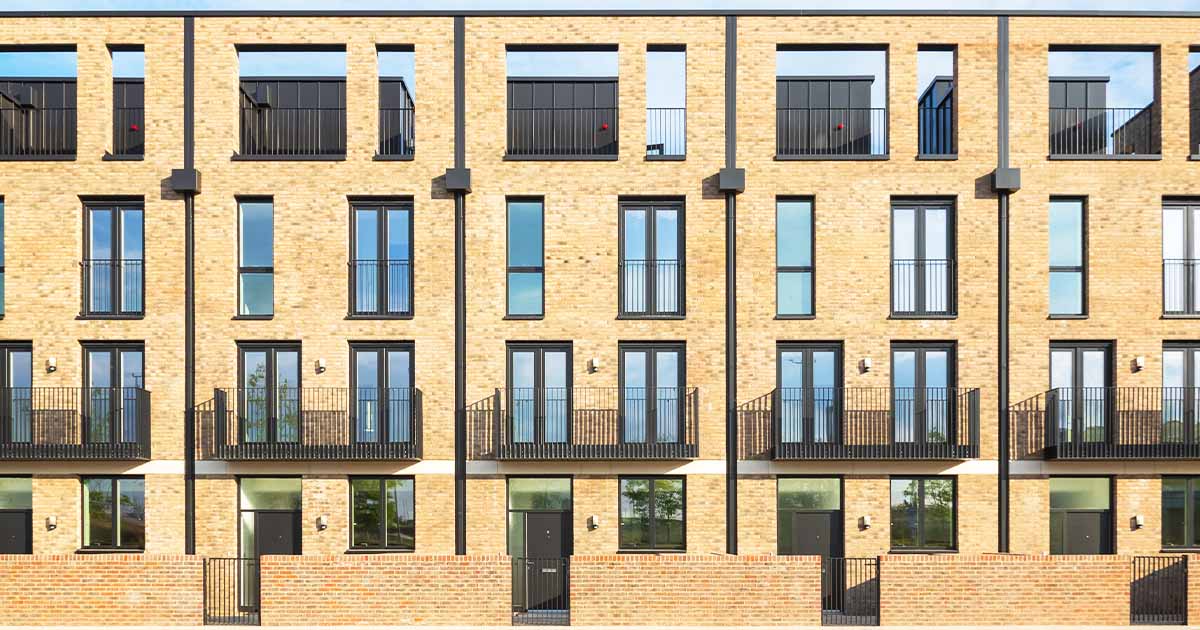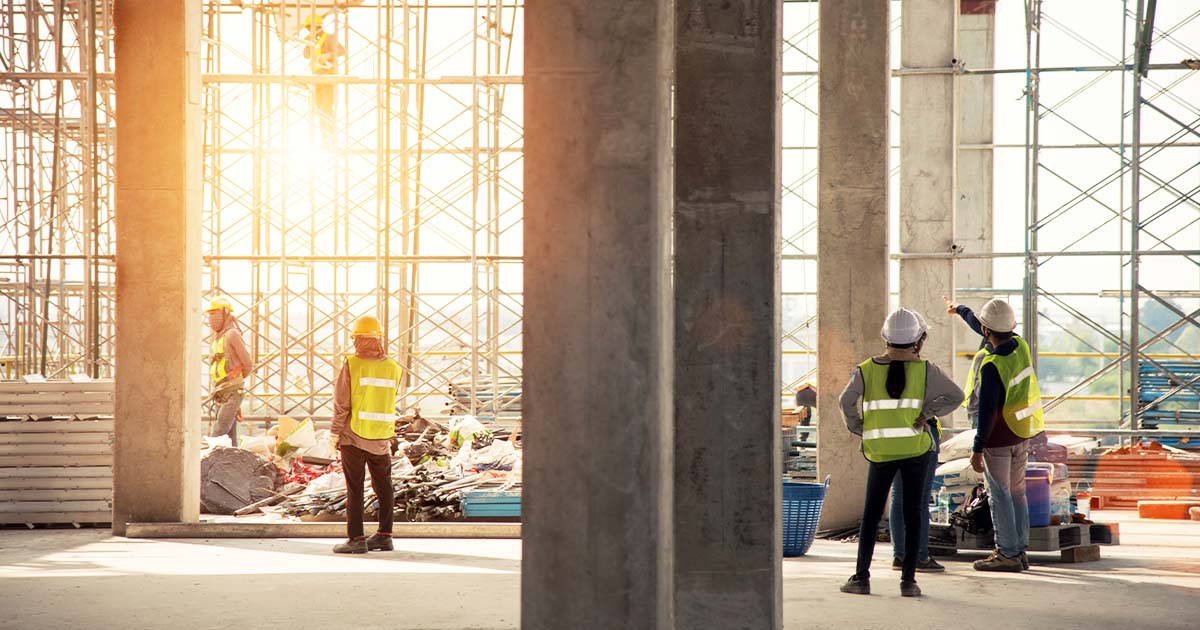The New Dutyholder Regime under the Building Safety Act 2022

One of the common misconceptions surrounding the Building Safety Act 2022 (“BSA”) and associated secondary legislation is that its provisions only apply to higher-risk buildings (in very simple terms, certain residential buildings above 18 metres or seven storeys in height). However, parts of the new regulatory regime impose legal responsibilities on anyone who commissions a construction project or is involved with its design and construction.
One part of the legislation which applies to all building work is the new building safety “dutyholder” regime, which was brought into force pursuant to the Building Regulations etc. (Amendment) (England) Regulations 2023, which amends the Building Regulations 2010.
Those familiar with the Construction (Design and Management) Regulations 2015 (“the CDM Regulations”) will recognise many similarities between the new building safety dutyholder regime and the position adopted by the CDM Regulations, which should allow industry professionals to get to grips with the new regime quickly.
When does the new dutyholder regime apply?
The new regime applies when “building work” is being carried out in England (save where the work is “minor work”). “Building work” and “minor work” are defined in the Building Regulations 2010 and building work includes the erection or extension of a building and the material alteration of a building.
When does the new dutyholder regime come into effect?
The new regime came into force on 1 October 2023 with transitional arrangements which confirm that the new regime is not applicable where:
- building work commenced before 1 October 2023
- plans were deposited with the local authority before 1 October 2023, unless the plans are rejected or building work has not commenced on site by6 April 2024.
If “building work” has not commenced before 6 April 2024, the new regime will apply.
What does the new dutyholder regime do?
The new regime has been implemented to promote the co-ordination of design work and building work by all key dutyholders in a construction project, including the client, all contractors and all designers. The regulations set out the duties imposed on each party, with enhanced duties applicable to higher-risk buildings.
Who are the key dutyholders under the new regime?
The Client
Like the CDM Regulations, one of the main dutyholders is the “client”, who is “the person for whom the project is carried out”. Clients’ duties include:
- making suitable arrangements to plan, manage and monitor a project
- providing building information to every designer and contractor on a project
- checking the competence of the entities it proposes to appoint on a project, including the principal contractor and the principal designer.
For higher-risk buildings there are enhanced obligations around checking competence and a duty to make sure everyone involved on a project is aware that the work is higher-risk building work. In these circumstances the client must keep written records of the checks it makes.
The duties applicable to commercial clients differ from those applicable to a domestic client. Please see further below.
Can there be more than one client on a project?
Yes. There may be more than one “client” on a project and in these circumstances (similar to the CDM Regulations), the new regime allows parties to agree between themselves who will act as the client for the purposes of the Building Regulations. Agreements should be made in writing. In practice we are likely to see these agreements being made in documents such as agreements for lease, forward funding agreements and other development documents where there are two or more parties who could be considered to be clients.
It is important to note that even if parties A and B agree in writing that party A is to be the client for the purposes of the new regime, party B retains certain duties, including:
- a duty to provide building information to each designer and contractor involved in a project, as soon as practicable
- a duty to co-operate with any other person working on or in relation to a project to allow persons with duties or functions under the Building Regulations to fulfil those duties or functions
- where the work is higher-risk building work:
- to ensure that information is provided to designers and contractors to make them aware that the project includes higher-risk building work and the nature of such work; and
- to periodically review the building work and the design work included or to be included in the project so as to identify whether it is higher-risk building work and to ensure information is provided where it becomes higher-risk building work.
The Principal Contractor and the Principal Designer
Again, these terms will be familiar to those who are familiar with the CDM Regulations. Under the new building safety regime, a principal contractor and a principal designer must be appointed by the client wherever there is more than one contractor working on a project. This mirrors the obligation under the CDM Regulations.
The key duties of the principal designer and the principal contractor include:
Principal designer
- to plan, manage and monitor design work during the design phase to ensure that the work is in compliance with relevant requirements
- to co-ordinate the work of all designers so that if the building work is built in accordance with the design, it would comply with all relevant requirements
- to liaise with the principal contractor and share information with them.
Principal contractor
- to plan, manage and monitor building work during the construction phase and co-ordinate the building work to ensure it complies with all relevant requirements
- to share information with the principal designer on the planning, management and monitoring of design work and co-ordinating design and building work to ensure compliance with all relevant requirements.
Where the principal designer or principal contractor is a company, an individual must be appointed to manage the functions of the relevant role.
When does the appointment have to be made?
The principal contractor and the principal designer should be appointed before the construction phase begins, unless the project is for higher risk building work in which case the appointment must be made before the building control approval application is submitted to the regulator.
What happens if there is only one contractor working on a project?
In these circumstances:
- the contractor is required to fulfil the role of principal contractor
- if there is more than one designer, the designers must agree who will fulfil the duties of principal designer and give a copy of the agreement to the client. Where there is only one designer that designer must act as the principal designer.
What if the client doesn’t appoint a principal designer or a principal contractor?
A commercial client must fulfil the duties of the principal designer and the principal contractor until they make an appointment.
The rules differ for domestic clients. Default provisions apply where the client has not made the necessary appointments: the designer in control of the design phase is appointed as principal designer and the contractor in control of the construction phase is appointed as principal contractor.
Contractors and Designers
The Building Regulations also recognise the roles of all contractors and designers who are involved in a project. They may not be the principal contractor or the principal designer, but they are still subject to various duties designed to ensure compliance with Building Regulations.
What are the requirements around who can be appointed as a dutyholder?
The Building Regulations contain detailed provisions requiring each prospective dutyholder to be “competent” to carry out building work or design work (as appropriate). In practice, we expect consultants and contractors will be expected to make declarations of their competence within professional appointments and building contracts, but clients should also be aware of their duties to check competence.
The test of competence differs depending on the duties the appointee is to perform, whether the appointee is an individual or a company and whether the building is a higher-risk building or not, but the main requirement for a company on a non-higher risk building is to ensure that they have the “organisational capability” to fulfil the relevant role.
What happens on completion of the building work?
Within five days after the completion of building work, the person carrying out building work is required to give notice confirming that the work is complete. The notice must include (amongst other information) a signed statement from the client confirming that to the best of the client’s knowledge, the work complies with all applicable requirements of the Building Regulations and a statement by each principal contractor and principal designer confirming that they have fulfilled their duties.
This requirement does not apply to higher-risk building work, where the gateway regime applies.
Frequently asked questions
Will the principal contractor and the principal designer for the purposes of the CDM Regulations be the same entities as the principal contractor and the principal designer for the purposes of the Building Regulations?
The Act does not require the parties appointed as principal contractor and principal designer for the CDM Regulations to perform the relevant roles under the building safety regime, although in practice, this may be the case. Whoever is appointed, must be appointed in writing.
A client will be treated as having complied with the requirement to appoint a principal designer and a principal contractor if they certify in writing that the person who is the CDM principal designer or the CDM principal contractor, is treated as appointed as the principal designer or the principal contractor for the purposes of the Building Regulations.
Can the principal designer or another consultant assist the client with the discharge of the client duties?
Under the CDM Regulations, it is common for a consultant to assist the client in the discharge of the client’s duties under the CDM Regulations. Sometimes this role is undertaken by the principal designer or it may be that the client appoints a CDM advisor.
One of the questions the new regime raises is whether we might see a similar position being adopted for the client duties under the Building Regulations. It is too early to say whether a similar approach will be adopted by the industry but we suspect this is likely to happen given that many clients will doubtless want assistance from professionals to help establish competence. Where clients do appoint others to assist with the discharge of client duties, clients should be aware that this not absolve the client from its liability.
What is “organisational capability” for the purposes of the competence requirements?
“Organisational capability” is defined as “appropriate management policies, procedures, systems and resources to ensure:
- individuals under the control of the organisation who carry out building work or design work comply with the relevant competence requirements
- individuals under the control of the organisation who are in training to develop the necessary skills, knowledge, experience and behaviours, are appropriately supervised.”
In practice, we expect clients to adopt similar practices to those they have in place to establish competence under the CDM Regulations. Although not strictly required for non-higher risk buildings it would be good practice for clients to keep records of competence assessments and to monitor competence throughout the project.
It is expected that evidence of competence is likely to include details of previous experience on similar projects/types of building and membership of industry bodies or particular qualifications.
What happens if a party does not comply with its duties?
Non-compliance with the new regime is a criminal offence, with sanctions including imprisonment and fines.
What do clients need to do now?
Step 1: ascertain whether the new regime applies
If the client intends to carry out building work in England, the position will be as follows:
- if the building work started before 1 October 2023, the new regime will not apply.
- if plans are lodged with the local authority before 1 October 2023 or a building notice has been given to the local authority before 1 October 2023, the new regime will not apply, unless:
- the plans are rejected
- building work has not commenced on site by 6 April 2024.
- from 6 April 2024 the new regime will apply to all building work.
Step 2: understand the client duties
If the new regime applies, clients should familiarise themselves with the client duties and establish the competence of those it intends to appoint in relation to the project. If a principal contractor and a principal designer have already been appointed for CDM purposes, clients may choose to appoint the CDM principal contractor and the CDM principal designer as principal contractor and principal designer under the building safety regime, provided they are satisfied as to the competence of the appointees.





